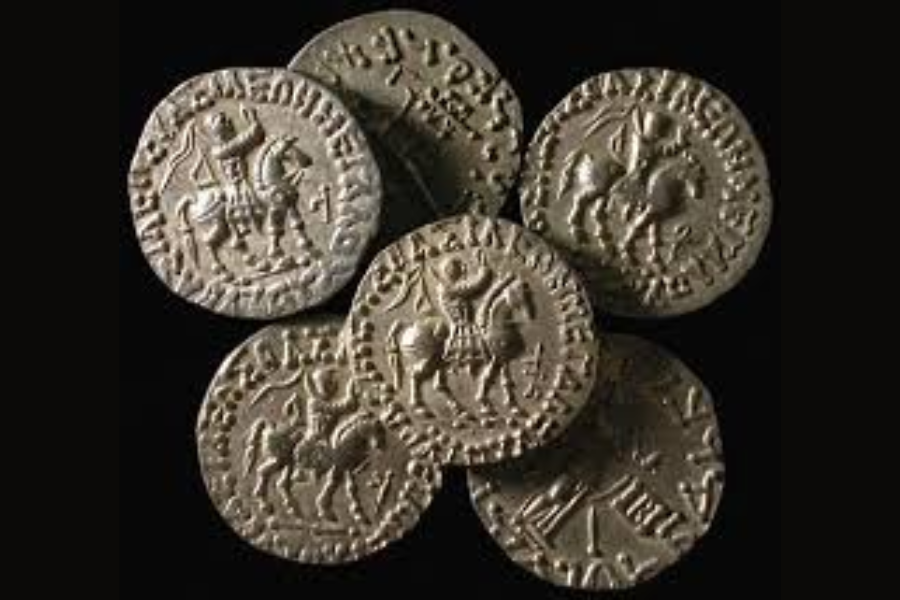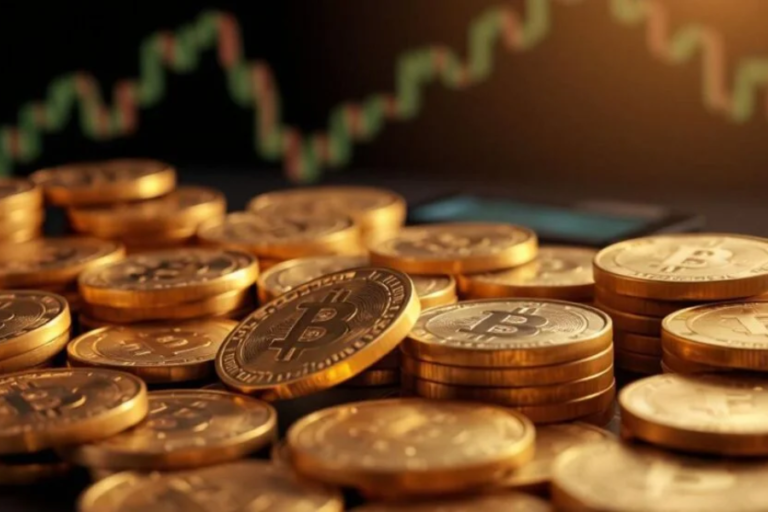Biblical Coins: An Insight into Ancient Numismatics and Their Historical Significance & More Explore
Throughout history, coins have served as more than just a medium of exchange. They have been used as instruments of political power, cultural expression, and religious significance. One particularly fascinating category of ancient coins is those referenced in the Bible, often referred to as “Biblical coins.” These coins provide an invaluable glimpse into the past, offering insights into the economies, politics, and religious practices of the ancient world. In this article, we will explore the significance of Biblical coins, their historical context, and the lasting legacy they have left on modern numismatics and biblical scholarship.
The Role of Coins in the Ancient World
Before diving into Biblical coins, it is important to understand the broader role coins played in the ancient world. Coins first appeared in the 7th century BCE in Lydia (modern-day Turkey), and their use spread rapidly across the ancient Near East, Greece, Rome, and beyond. Coins were not only used as currency but also as a form of propaganda. Rulers often had coins minted with their own images, symbols, and inscriptions to assert their authority and promote their policies.
For example, Roman emperors used coins as tools for imperial propaganda, displaying their likenesses and victories over enemies. Similarly, the Seleucid kings, who ruled over much of the ancient Near East after the conquests of Alexander the Great, minted coins that reflected their Hellenistic culture and the political changes of their reigns.
Coins also had religious significance in many cultures, and their images often depicted gods, goddesses, or religious symbols. In the case of ancient Judea and the surrounding regions, the interaction between coins and religion is particularly fascinating, as it ties into the story of the ancient Jewish people and their relationship with the Roman Empire.
Biblical Coins: Historical and Religious Context
Biblical coins refer to coins that appear in the text of the Bible or those that were in circulation during the time periods described in the Bible. These coins often feature depictions of rulers, gods, or symbols that were significant to the people of that time. Some of these coins are mentioned directly in the scriptures, while others are understood to have been in use during the biblical era.
The most significant period for Biblical coins is the time of the Second Temple in Jerusalem, which lasted from the 6th century BCE until the destruction of the Temple in 70 CE. This was a time of great political and religious upheaval, as Judea was under the control of various foreign empires, including the Persian, Hellenistic, and Roman empires. The coins from this period offer valuable evidence of the political and religious dynamics at play.
Key Biblical Coins and Their Significance
Several important coins appear in the Bible, and these coins provide valuable historical and religious context. Some coins are mentioned by name in the biblical text, while others are indirectly referenced. Below are some of the most notable Biblical coins and their significance.
1. The Shekel of Israel
The shekel was one of the most important currencies in ancient Israel. It was used as a unit of weight for measuring precious metals and was also minted as a coin. The shekel is mentioned several times in the Bible, and it played a key role in the economy of ancient Judea.
One of the most famous references to the shekel in the Bible is in the Book of Exodus, where the Israelites are instructed to give a half-shekel as a tribute for the maintenance of the Tabernacle (Exodus 30:13). This shekel was a symbol of religious duty and national identity.
In the New Testament, the shekel is also mentioned in the story of the “tribute money” in the Gospel of Matthew. When the Pharisees question Jesus about paying taxes to Caesar, Jesus famously asks them to “render to Caesar the things that are Caesar’s” (Matthew 22:21). The coin used in this episode is likely a Roman denarius, but the shekel remains a symbol of Jewish religious and civic life.
2. The Roman Denarius
The Roman denarius was one of the most commonly used coins in the ancient world, and it plays a significant role in the New Testament. The denarius is mentioned in the Gospel of Matthew, where Jesus uses the coin to teach a lesson about paying taxes. The denarius was a silver coin issued by the Roman Empire, and its use was widespread across the empire. The coin was often stamped with the image of the emperor, which made it a powerful symbol of Roman authority.
The denarius is also the coin referred to in the parable of the laborers in the vineyard (Matthew 20:1-16), where the workers are paid a denarius for a day’s work, regardless of how long they worked. The denarius was a symbol of Roman dominance in Judea and serves as a reminder of the political tensions between the Jewish people and their Roman rulers.
3. The Tyrian Shekel
The Tyrian shekel was a silver coin minted in the ancient Phoenician city of Tyre (modern-day Lebanon). This coin holds particular significance in the Bible, as it was the coin used to pay the temple tax in Jerusalem. The Tyrian shekel is mentioned in the Gospel of Matthew in the context of the story of the Temple tax (Matthew 17:24-27). When Jesus and Peter are asked to pay the temple tax, Jesus instructs Peter to catch a fish, and the coin found in the fish’s mouth is used to pay the tax.
The Tyrian shekel was widely used throughout the Mediterranean world and was highly valued for its silver content. It was also a symbol of the cooperation between the Jewish people and the Roman Empire, as Tyre was a major trading partner of Rome at the time. The Tyrian shekel’s appearance in the Bible underscores the intersection of religion, economics, and politics in ancient Judea.
4. The Widow’s Mite
One of the most poignant stories involving Biblical coins is the account of the widow’s offering in the Gospel of Mark (Mark 12:41-44) and the Gospel of Luke (Luke 21:1-4). In this story, Jesus observes a poor widow who donates two small coins, known as “mites,” to the Temple treasury. The mites were the smallest and least valuable coins in circulation at the time, but Jesus commends the widow for giving all she had, illustrating the importance of selflessness and devotion to God.
The widow’s mite has become a symbol of humility, sacrifice, and generosity. While the exact coin used by the widow is not known, it is likely a small copper coin known as the lepton, which was used in Judea during the time of the Second Temple. The story highlights the spiritual value of giving, regardless of the monetary value of the gift.
5. The Prutah of Pontius Pilate
The prutah was a small copper coin minted by the Roman governor Pontius Pilate during the time of Jesus. Pilate’s prutahs are often associated with the trial and crucifixion of Jesus, as they were in circulation during that period. In the Gospel of Matthew, when Judas Iscariot betrays Jesus for thirty pieces of silver, some scholars believe that the coins used in the transaction may have been prutahs.
Prutahs minted by Pontius Pilate are significant because they provide archaeological evidence of the Roman presence in Judea during the time of Jesus. The coins also feature symbols of Roman imperial power, such as the image of the emperor and religious symbols associated with Roman paganism. These coins are a reminder of the political and religious tensions that existed between the Jewish people and the Roman authorities during this tumultuous period in history.
The Legacy of Biblical Coins
Biblical coins continue to captivate historians, archaeologists, and collectors alike. Their significance goes beyond their monetary value, as they offer unique insights into the ancient world. By studying these coins, scholars can gain a deeper understanding of the political, economic, and religious landscape of biblical times.
For collectors, Biblical coins are highly prized for their rarity and historical importance. Many numismatists specialize in the study of ancient coins, and Biblical coins are often featured in their collections. These coins are also valuable for biblical scholars, who use them to cross-reference historical events mentioned in the Bible.
Conclusion
Biblical coins are far more than just relics of ancient currency; they are windows into the past, providing a tangible connection to the world of the Bible. Whether it’s the shekel of Israel, the Roman denarius, or the widow’s mite, these coins offer invaluable historical and religious context that enrich our understanding of biblical events. They serve as reminders of the people and events that shaped the history of the ancient world, and their legacy continues to resonate today, both in the fields of numismatics and biblical scholarship.
Discover the latest crypto trends and expert insights at Crypto30x.com.co.






